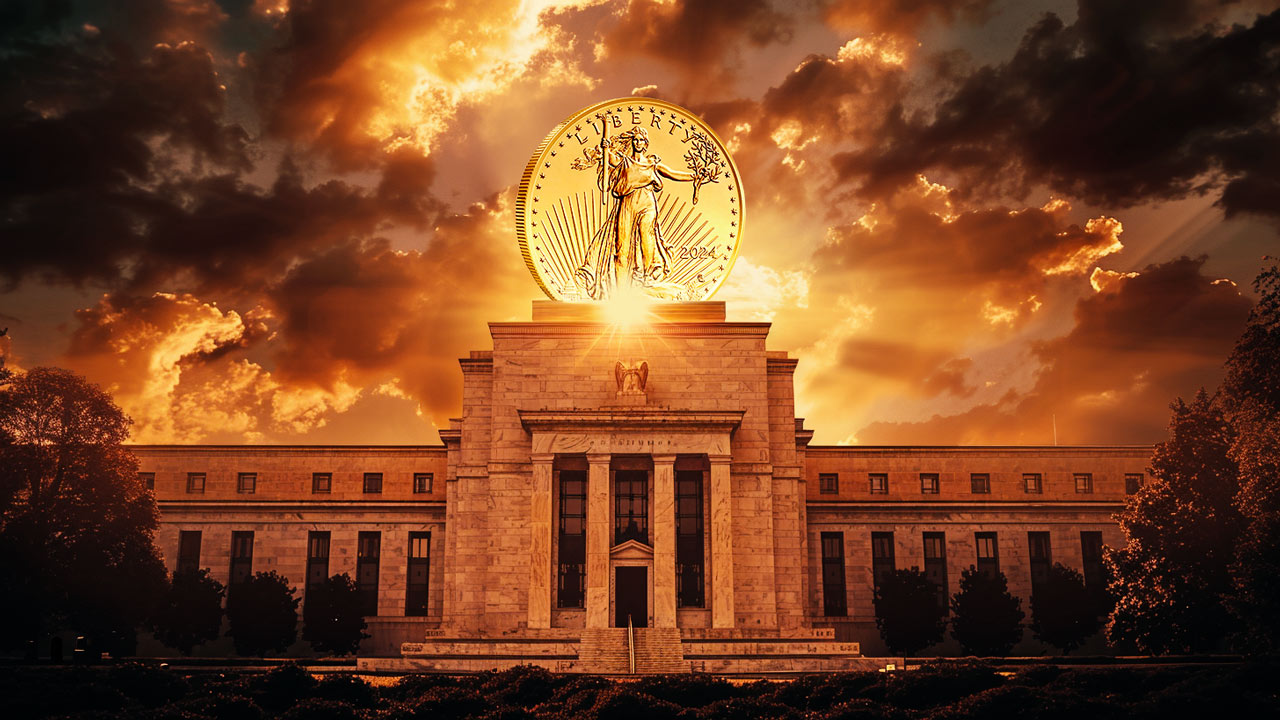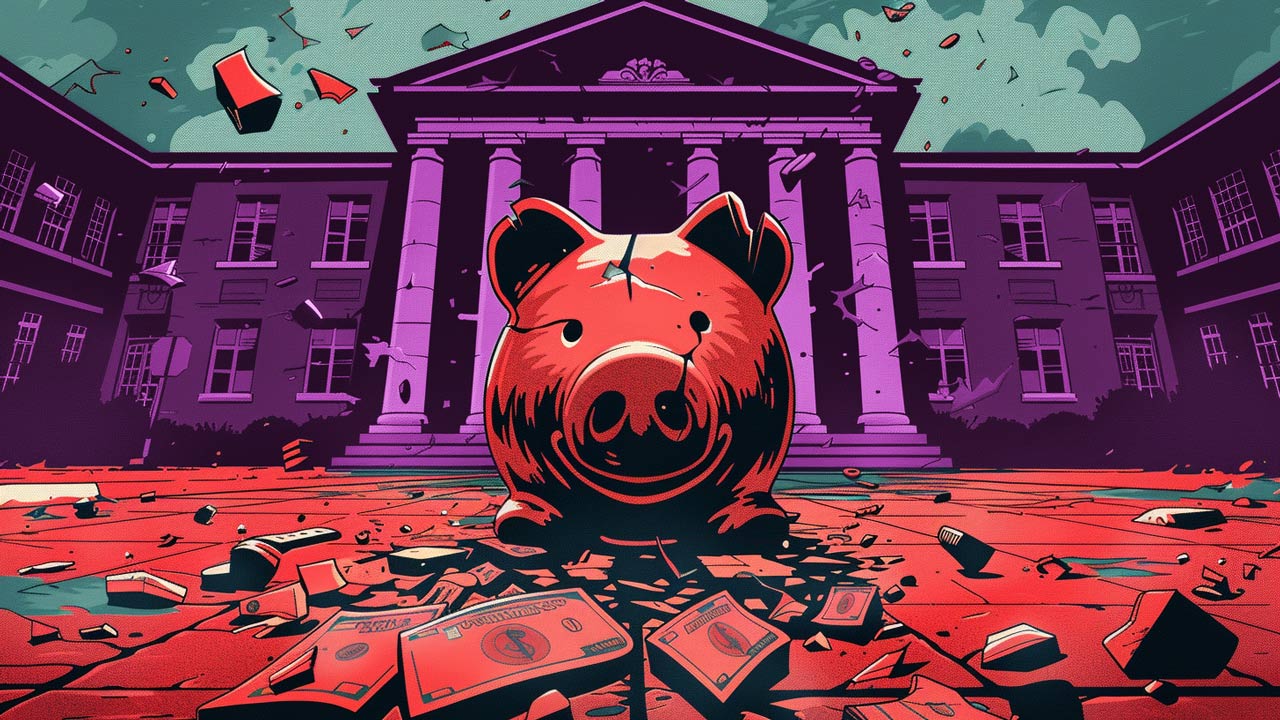For Whom the Bell Tolls
By Peter Schiff
There is an old adage on Wall Street: no one rings a bell to signal a market top or bottom. Yet, I have found that bells do ring; it’s just that few people know exactly what sound to listen for.
Perhaps the biggest and most liquid of all markets is for US government bonds. That market has been rallying for almost thirty years. The bull can be traced back to 1981, when Treasury bond yields peaked at about 15%. At that time, high inflation and a weakening dollar had justifiably squelched demand for Treasuries. Even the ultra-high interest rates were not enough to attract buyers.
But this was also when the proverbial bell was rung. Fed Chairman Paul Volcker had signaled, by jacking up interest rates so high, that he would stop at nothing to break the back of inflation. Volcker’s iron will, and Reagan’s unflinching support, restored demand for Treasuries for the next three decades.
We have arrived today at a similar inflection point. After falling steadily for 30 years, bond yields are now heading north with a full head of steam.
Many are taking the recent moves in stride. The consensus is that despite the recent spike, yields are still historically low, and that they are unlikely to go much higher from here. Once again, most on Wall Street are either tone deaf or plugging their ears.
For years, the Fed has been able to prevent market forces from correcting our growing economic imbalances by inexorably pushing rates lower. This happened in 1991, 2001, and most notably in 2008. These easing campaigns succeeded in boosting the economy in the short term by greatly increasing the amount of debt held by both the private and public sectors. As such, these episodes have allowed our economy to delay and magnify the ultimate reckoning.
Just like a junkie who requires ever-increasing doses of heroine to achieve the same high, the Fed has needed to take rates ever lower to boost the economy after its previous stimulants had faded.
To stimulate after the bursting of the housing bubble (which itself resulted from the low interest rates used to juice the economy following the bursting of the dot-com bubble), the Fed lowered interest rates to practically zero. At that point, rates could go no lower. However, when that stimulus failed, the Fed decided to bring on the heavy artillery in the form of “quantitative easing,” or as it is known in the vernacular, “printing money to buy government debt.”
Lowering the federal funds rate, its traditional weapon, tends to make the most impact on short-duration debt. By its own words, the goal of quantitative easing (QE) was to lower long-term interest rates. It was hoped that this would achieve what low short-term rates had not: an increase in stock and real estate prices, a rise in household wealth, and consequently greater consumer spending, economic growth, and job creation.
However, the Fed’s plan backfired. The selling pressure on long-term bonds is overwhelming the Fed’s buying pressure. Spiking rates (which move inversely to price) are powerful evidence that the bond bubble has finally burst. The Fed threw everything but the kitchen sink at the bond market to force yields lower, yet they rose anyway. If bond prices failed to rise given such a Herculean effort to lift them up, there can be only one direction for them to go: down.
In true form, few on Wall Street hear the ringing. In a shocking display of rationalizing cognitive dissonance, some (such as Wharton Professor Jeremy Siegel in a WSJ op-ed) have even suggested that the spike in yields is proof that quantitative easing is working. Siegel heralded higher rates as indicative of economic resurgence, which supposedly was the Fed’s goal all along. In other words, QE2 worked so well, we skipped the lower rates and went directly to the higher rates that go with growth!
There is also a widespread belief that long-term rates will remain contained at historically low levels. Four percent is seen as the ceiling above which ten-year yields will not rise. I believe this ceiling will prove to be of the thinnest glass. Once yields easily break that level, they may quickly rise above five percent, where they will likely encounter some resistance, before heading significantly higher.
In fact, if rates approach six percent next year, we will be seeing a ten-year high in ten-year yields. If our economy is this fragile with record low rates, image how much weaker it will be with rates at ten-year highs? If the Fed believes that lower rates revive an economy through the ‘wealth effect,’ what does the Fed feel will happen when higher rates produce a reverse ‘wealth effect’?
Not only does this bell herald the end of the bond bull, but it also marks the end of the Fed’s ability to artificially engender economic “growth” through monetary policy. More significantly, the new tax compromise President Obama is about to sign will add more than $900 billion in new debt onto the government’s balance sheet over the next 10 years. This will put additional upward pressure on interest rates, and more political pressure on the Fed to monetize the debt. It is no coincidence that the real upward movement in yields began immediately after the tax/stimulus deal was brokered in Washington.
What lies ahead is a new era of rising interest rates, soaring consumer prices, increasing unemployment, economic stagnation, and lower living standards. Instead of stimulating the economy, quantitative easing and deficit spending will prove to be a lethal combination. Bondholders beware, the bell tolls for thee.
Follow us on Twitter to stay up-to-date on Peter Schiff’s latest thoughts: @SchiffGold
Interested in learning about the best ways to buy gold and silver?
Call 1-888-GOLD-160 and speak with a Precious Metals Specialist today!



 With a hot CPI report casting a shadow of doubt on the likelihood of a June interest rate cut, all eyes are on the Fed. But they’ve caught themselves in a “damned if they do, damned if they don’t” moment for the economy — and the news for gold is good regardless.
With a hot CPI report casting a shadow of doubt on the likelihood of a June interest rate cut, all eyes are on the Fed. But they’ve caught themselves in a “damned if they do, damned if they don’t” moment for the economy — and the news for gold is good regardless.  It’s no secret that the American public is wildly ignorant of many issues that are central to the success of our nation. Just a generation ago it would have been unthinkable that less than half of the American population could recognize all three branches of government. America is in most cases far less educated about its government […]
It’s no secret that the American public is wildly ignorant of many issues that are central to the success of our nation. Just a generation ago it would have been unthinkable that less than half of the American population could recognize all three branches of government. America is in most cases far less educated about its government […] In investing, “Buy low, sell high” is among the most well-known sayings, and generally, it’s good advice. But with gold still holding near its historic all-time highs, central banks led by China are bucking the classic adage and smash-buying more, buying the top to fortify themselves against a global monetary and financial blow-up.
In investing, “Buy low, sell high” is among the most well-known sayings, and generally, it’s good advice. But with gold still holding near its historic all-time highs, central banks led by China are bucking the classic adage and smash-buying more, buying the top to fortify themselves against a global monetary and financial blow-up. When John Bogle died in 2019, people around the world mourned. Bogle created the Vanguard Group and made the index fund mainstream. Index funds are investment vehicles that invest in a class of investments as a whole, rather than trying to predict what specific stocks or securities will do best. So an investor could invest in an […]
When John Bogle died in 2019, people around the world mourned. Bogle created the Vanguard Group and made the index fund mainstream. Index funds are investment vehicles that invest in a class of investments as a whole, rather than trying to predict what specific stocks or securities will do best. So an investor could invest in an […] As the Democratic Party has shifted away from its traditional base of working-class and middle-class Americans, to an increased reliance on college professors, students, and highly educated but low-paid professions, such as social workers, a new policy has risen to prominence: student loan forgiveness.
As the Democratic Party has shifted away from its traditional base of working-class and middle-class Americans, to an increased reliance on college professors, students, and highly educated but low-paid professions, such as social workers, a new policy has risen to prominence: student loan forgiveness. 
Leave a Reply